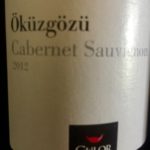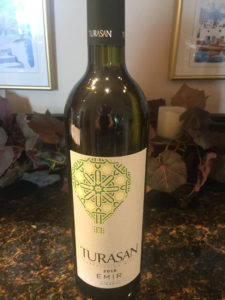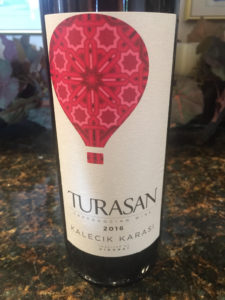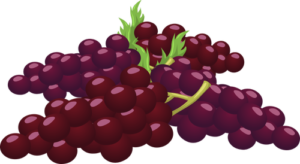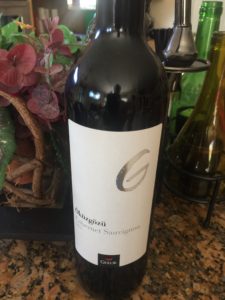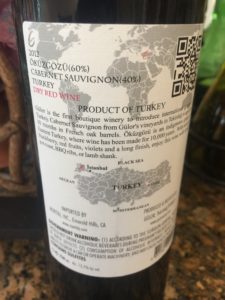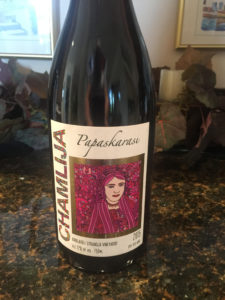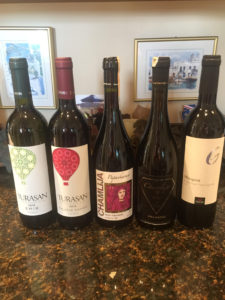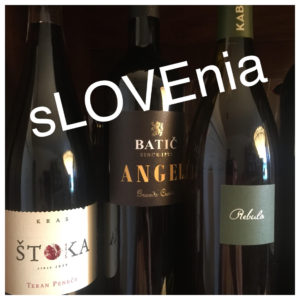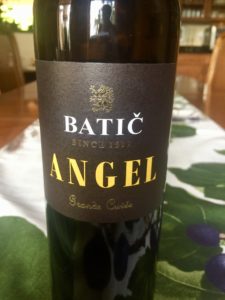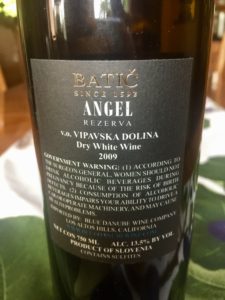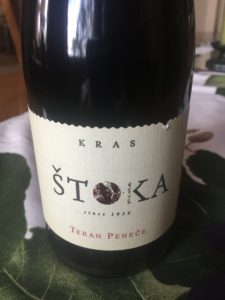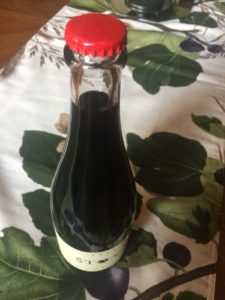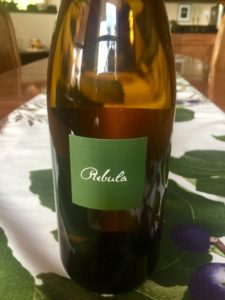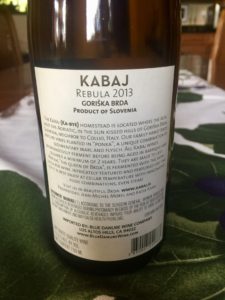Yes, Öküzgözü,………and Boğazkere…………and Narince just to name a few of the grapes indigenous to the country of Turkey. Here is their story!
Turkey’s wine history may date back to 7000 BC, and it may be home to between 600-1500 indigenous grape varieties (depending upon which source you use), but Turkey is an overwhelmingly Muslim country and many of the people who live there have never touched a drop of wine in their lives. Alcohol is considered “haram” or prohibited to them. 80% of Turks don’t drink alcohol at all and many of those who do prefer beer or raki, an anise-flavored clear brandy made from grapes and raisins.
The hot humid climate makes Turkey ideal for viniculture. According to a “Viticulture in Turkey” 2018 report, Turkey is the sixth top grape-producing country in the world; however most of them are eaten as fresh table grapes or raisins. There is a long tradition of winemaking, but unfortunately high taxes and government regulations significantly hamper the wine business. In 2013 President Erdoğan’s Justice and Development Party placed restrictions on alcohol sales between 10 pm and 6 am, no sales are allowed near schools or mosques, and advertising was banned. It is also illegal to order alcohol over the internet, and there is a special consumption tax in addition to purchase tax on alcohol in Turkey. Doesn’t sound very promising for a wine producer! In fact it is amazing that wine production even continues to exist in Turkey. Despite all of this bad news, the government has supported the export of its wine, and there is some Turkish wine finding its way out of the country to Belgium, Turkish Northern Cypress, the UK, Germany and the US. Turkish winemakers have even won gold medals in international wine competitions. Where there is a will, there will be a way!!! Turkey has excellent grape varieties, vineyards and producers that would be perfect for this modern time when winelovers are actively seeking wines from all corners of the world. Croatia, Hungary, and Slovenia are some recent examples of how wine production and marketing has taken a positive turn and improved our wine drinking options. Sadly this may all change under the current regime of President Erdoğan if it has not already done a complete 360 degree about face. The country appears to be in financial and economic crisis. Censorship is at the discretion of the President – you can’t even use Wikipedia in Turkey!
Winemaking in Turkey
Turkey has gone unrecognized for wine making for centuries. Fortunately the 21st century has brought some welcome changes when the wine industry became privatized and regulated in 2001. The domestic market is still taxed, but wine quality has greatly increased drawing attention to the possibility of importing Turkish wine by wine enthusiasts and importers around the world.
There are over 1.1 million acres planted under vine for wine production as of the 2017 International Organization of Vine and Wine (OIV) report. (Numbers always seem to vary depending upon your source!) Turkey is the world’s sixth top producer of grapes with around 4 million metric tons; however they are mainly grown for fresh table grapes and raisins. (“Viticulture in Turkey” International Horticultural Congress 2018). According to the 2017 OIV report, the number of hectares under vine has been steadily decreasing for the last four years.
Between 30 – 60 of those indigenous grape varieties are grown commercially, about 30 of which are outstanding wine grape varieties.
Turkey became a republic in 1923. Turkey’s first president Mustafa Kemal (Ataturk – father of Turks) established the country’s first commercial winery in 1925. In 1935 Kemel charged two French viticulturists with the task of studying Turkey’s indigenous grapes and determining which ones were suitable for growing in any particular regions of the country. Under Kemal all alcohol production was run by a state company called Tekel and as a result of the Frenchmen’s study, 28 wineries were created. Their mission was to make large quantities of wine; quality was unimportant! The largest of the wineries was Tekel which eventually became privatized in 2004. The wine division operates under the Kayra brand, now owned by Diageo, a large international beverage company. Kayra has two wine making facilities – one in Sarkoy and one in Elazig.
Turkey may have a great climate for winemaking, but there are a couple of agricultural challenges. First, there is too much water in the form of underground springs. This means that the grapevines do not have to struggle, thus creating thinner wine. The second challenge is how to obtain the right kind of grapes. Muslim farmers are reluctant to sell grapes for end-use alcoholic purposes, and if they do sell them, it is often done in secrecy. Also most farmers are used to growing for quantity to make table grapes and raisins and don’t understand limiting the yield to achieve grapes better suited for wine production.
Turkey has no system for wine regulations or appellations. There are no overall wine production standards. Enotourism is basically non-existent in Turkey. So unless you are drinking wine from a well- known winery, this is truly a case of “let the buyer beware”.
Today there are 31 export-driven producers making up Wines of Turkey, a strategic partnership group supported by the Turkish Ministry of Economy, established in 2008 to represent the Turkish wine sector and promote the country’s top 25 wineries internationally. Its mission is “to develop the wine market and culture of Turkey and to increase exports by making Wines of Turkey a generic brand associated with quality wine.” That sounds like a challenging mission when their country makes it so difficult for wine producers, and such a large percentage of the population does not drink wine!
Tekel and Kayra
Tekel was the Turkish state-owned tobacco and spirits monopoly founded in 1852 by its Ottoman rulers. It operated the largest winery of Turkey until 2004 when the alcoholic beverages section of Tekel was privatized by a block sale of 100% of shares. Now Tekel produces wine under the privately owned Kayra brand.
Kayra Wines, once a part of Tekel, is now privately owned by Diageo, a large international beverage company. A native Californian, Daniel O’Donnell has been overseeing the wine production for over 10 years. O’Donnell got his prior experience at Ravenswood in Sonoma, then moving on to Italy, China, Chile and New Zealand. He was given the challenge at Kayra to take a previously government-run operation then reported to be losing $6 million a year to a profitable business making and exporting quality wines. He started out by closing down five wineries leaving just two (in Elazig and Sarkoy) and throwing away 16 million liters of wine that were then stored in large concrete tanks. O’Donnell had his work cut out for him – there was no history of previous wines made, no standardized production practices, no back vintages were kept for comparison sake – in fact previous winemakers didn’t even taste their wines! Around 80% of the workers here don’t drink or taste the wine. And to think wine has been made in this part of the world for 7000 years. For those Turks who do drink alcohol, wines have to be made with lots of tannins. Turkish palates call for strong, bitter coffee, spiced meat dishes and tea that has been brewed for several hours. They need big powerful reds.
Kayra is most known for promoting native Turkish grapes such as Kalecik Karasi, Öküzgözü, Boğazkere, Narince and Emir. O’Donnell says the Öküzgözü (bull’s eye) is most similar to a Barbera while the Boğazkere (throat burner) is much more tannic and needs proper handling to soften those astringent tannins. According to O’Donnell “Öküzgözü is the grape with the biggest potential to make fine wine in Turkey”. He has spent a lot of time trying to create a quality benchmark for it and uses a small amount of American oak. He has also worked hard to tame the tannins of the “burn the throat” grape Boğazkere to make it a little more winelover friendly! O’Donnell says it’s a “rustic grape that makes you want to dip a cigar into the wine and chew it”. That probably requires a lot of getting used to!!!!
Grapes in Turkey
Wine is called Şarap (sha-rup) in Turkish; red wine is Şarap kirmizi (kuh-muh-zuh), white wine is Şarap Beyaz and rosé is Şarap Roze.
These are some of the major indigenous grape varieties. As mentioned earlier, there are many others some of which will be identified as we learn about a particular region.
Öküzgözü (Oh-cooz-goe-zue) is one of Turkey’s oldest native grapes. It is native to the Elaziğ province of Eastern Anatolia north of the Taurus Mountains where grapes supposedly have been cultivated back to 8000 BC. Öküzgözü takes its name from large dark berries that look like a “bull’s eye” or literally “ox eye”. The color is light ruby red similar to Pinot Noir. The taste is spicy and medium bodied with a delicate bouquet of red autumn fruit, medium tannins and high acidity. You can expect some notes of cloves and licorice. It is usually blended with Boğazkere. This is the Turkish grape that may have the biggest fine wine potential.
Boğazkere (Bow-aahz-keh-reh) is THE most tannic Turkish grape. The name translates to “Throat Scratcher” or “burn the throat”. Boğazkere is also native to Elaziğ province. It has a dark ruby to purple color, full-bodied palate, high dense tannins, medium acidity (similar to Tannat) and dark berries. It is usually blended with Öküzgözü.
Emir (Eh-mere) is a native white grape from Cappadocia and has been made into crisp, refreshing wines since Roman times. Its name means Ruler/Lord and that is who it was originally made for. The color is straw-yellow with a green hue, a light to medium bodied palate with lively acidity dominated by green apple, citrus, minerality and a bit of pine. It is not aged in oak and does not go through malolactic fermentation. Sometimes it is aged in volcanic caves. It makes sparkling as well as unique and creamy still wines.
Kalecik Karasi (Kah-le-djic-car-ah-ser) translates to the “black from Kalecik” which is a small village 65 km northeast of Ankara in Central Anatolia but can be found all over Turkey. The grape is ruby red and medium bodied on the palate with low tannins, lively acidity, cotton candy aroma and dominated by red fruits.
Karalahna (kah-rah-lah-h-nah) is a native red grape from far western Turkey mainly used as a color enhancer for blending. Some believe it to be the same grape as the Greek Xinomavro.
Kuntra (koon-tra) is a red grape native to the Aegean Island of Bozcaada. It gives a slightly sweet flavor to wine and is also used in making Turkish brandy.
Narince (Nah-rin-djeh) means “delicate” in Turkish. The color is straw yellow with a green hue, a medium to full-bodied palate and well balanced with good acidity and citrus aromas. It is usually aged in oak and a Chardonnay-like flavor profile. It is made into dry and semi-dry wines and the bouquet becomes more complex with aging.
Sultaniye (Sool-tah-nee-yeh) or sultana grape is also straw yellow with a green hue and medium to full-bodied with well- balanced acidity and citrus aromas. It is usually consumed as table grapes and raisins but can make dry and semi-dry light fruity easy drinking wines. It’s often known as Izmir üzümü (grape of Izmir) since it is grown extensively around Izmir. And yes, it is the same as the Thompson seedless grape grown in the US! William Thompson, a California grape grower, is sometimes credited with introducing it to the US. On a side note for our foodie friends, most raisins in the US are made from this grape.
Vasilaki (va-see-la-ka) is also native to the Aegean Island of Bozcaada. It produces crisp white wines with floral and fresh green herbal notes and is not found anywhere else in Turkey.
Turkey’s wine-growing regions:
Matthew Horkey and Charine Tan, two winelovers who established “Exotic Wine Travel” in 2015, toured the countries of Turkey, Armenia and Georgia in 2015 and 2016. Their first wine travel book is called “Uncorking the Caucasus: Wines from Turkey, Armenia and Georgia”. They traveled across Turkey for seven weeks and tasted a lot of wines, then wrote down their experiences to share with us. You can buy the book like I did from Amazon.com. If you have a keen interest in learning about lesser known wine-producing countries and their wines like I do, I highly recommend this book as well as all of their other wine travel books. I also gathered a lot of information about Turkey’s wine regions from winesofturkey.org website as well as many others!
Here is a quick lesson in geography which I find really helpful when learning about “exotic” wine regions. According to the worldatlas.com (4.25.17), the country of Turkey is made up basically of two parts on two continents:
5% in Southeast Europe representing Thrace in the Balkan Peninsula
95% in Asia which is known as Anatolia, Asia Minor, Asiatic Turkey or the Anatolian Plateau.
For our purposes, we divided up the wine-growing regions into four as follows:
Marmara – notably the Thrace wine route and the Sarkoy wine route,
Aegean made up of Gallipoli, Bozcaada, the Aegean Coast, Denizli (in Southwestern Anatolia), Mediterranean which are generally coastal regions and
Anatolia, the interior Asian area which is 95% of Turkey.
Marmara wine region
The Marmara Region is bordered by Northeast Greece, Southern Bulgaria, Northwest Turkey, the Aegean Sea and the Black Sea. At the center of the region is the Sea of Marmara, which gives the region its name. Among Turkey’s seven geographical regions, the Marmara Region has the second-smallest area, yet the largest population; it is the most densely populated region in the country. In 2013 14% of Turkish wine was produced in this region.
Thrace makes up a large portion of the Marmara Wine Region. It is located in Southeastern Europe between the Aegean Sea and Black Sea and has a slight Mediterranean climate similar to southwest Bulgaria and northeast Greece. The region of Thrace is known as the birthplace of Dionysus, the Thracian god of wine. 40% of Turkish wine production comes from here. These are the most elegant and balanced wines in Turkey, and the region receives the most international acclaim. Most wines of Thrace are made from international varieties. According to “Uncorking the Caucasus”, this is the only Turkish region mentioned in the Lonely Planet book Wine Trails. During my internet research about the Thrace Wine Route, I came across an article that said 12 boutique wineries established in 4 different regions of Thrace: Tekirdag, Sarkoy, Kirklareli and Gallipoli developed a project called “Thrace Wine Route” and opened a website called www.thracewineroute.com. I have not been able to access it. The development and promotion of the wine route was in response to the fines put into place for tasting events, writing about wine, and marketing of any kind which no one knew how much fine they would receive unless accused. I did find these 12 wineries on the internet, some with pages easy to access and some with no pages. In fact I even Facebook be-friended some of them! Here they are……………
Tekirdag
Here are six modern day family run wineries in Thrace that are worth knowing about:
Arda Winery: The first boutique winery in Edirne, a historic town in the center of Thrace. The winery resembles early 20th century architecture and concentrates on low yield, high quality Cabernet Sauvignon and Merlot that have been cultivated since 2007.
Barbare Vineyards: Can Topsakal, the owner of Barbare, teamed up with Xavier Vignon in 2000. The winery focuses on organic, biodynamic and sustainable viticulture and produces Cabernet Sauvignon, Merlot, Syrah, Grenache and Mourvέdre grapes. Xavier travels to Barbare once a month to oversee the winegrowing and winemaking activities at Barbare. Note: we forkandcorkdivine.com winelovers had the pleasure of drinking one of Xavier’s Chȃteauneuf- du-Pape wines several months ago at our Southern Rhone wine dinner.
Barel Vineyards is a small boutique winery established in 2010 just a few miles from Tekirdag. The Akin family uses modern techniques to make their wines from Cabernet Sauvignon, Merlot, Syrah, Cabernet Franc and Chardonnay.
Chateau Nuzun is located one hour west of Istanbul and makes only red and rose wines from Cabernet Sauvignon, Merlot, Syrah, Pinot Noir, Zinfandel and Öküzgözü grapes. Nuzun was established in 2004 and certified organic in 2010. I googled their website and it said that due to a recent Turkish law, they are no longer able to present visuals or descriptions of their wines. I hear their Chateau Nuzun Cabernet Sauvignon and Shiraz blend is quite pleasing, but we will probably never know unless we go to Turkey!
Umurbey Vineyards are located outside Tekirdag in Yazir Village; they have also opened a wine bar in Tekirdag city center where you can try some of their wines on the main road in front of the seashore.
Sarköy is on the Marmara Sea coast line about 1 hour from Tekirdag. Once a major wine production area, there are now 3 wineries in the Sarköy region of the Thrace Wine Route: Melen, Gulor and Chateau Kalpak. Many of the old vineyards have been converted to olive trees.
Gulor Winery is the first boutique winery in Turkey, founded in 1993 by a Turkish businesswoman and philanthropist Guler Sabanci. Gulor is a modern winery with 12 hectares of estate vineyards on the north shore of the Marmara Sea just outside the town of Murefte which was once the historical center of Turkish wine production. The estate grows Cabernet Sauvignon, Merlot, Petit Verdot, Malbec, Syrah, Sauvignon Blanc, Sangiovese and Montepulciano. The indigenous grapes like Öküzgözü and Boğazkere come from vineyards in Elazig in the Euphrates River valley and from the right bank of the Tigris River. Gulor brought international grapes to Turkey with the planting of Cabernet Sauvignon on the Tekirdag estate in 1993.
Gulor is one of those rare boutique wineries offering high-quality blends of international and local grapes. Upon founding Gulor, Professor Nicolas Vivas was brought from the University of Bordeaux to assist. and has continued to direct all phases of production and winemaking for the last two decades. A seventh-generation winemaker from Languedoc has been at the winemaking helm since 2012. Approximately 200,000 cases are produced annually with three tiers out of the five produced currently imported to the US – Rouge, Silver and Sayeste. Sayeste bottles Öküzgözü and an Öküzgözü- Boğazkere blend; Silver label bottles blends of Öküzgözü with Cabernet Sauvignon and Petit Verdot; Bordeaux varieties and blends make up the Rouge label wines. Gulor is credited with Turkey’s first commercial Bordeaux-style production.
Gulor G Silver Öküzgözü-Cabernet Sauvignon 2012 is known as Bull’s eye for its large dark fruit Öküzgözü which makes up 60% of the blend. This wine promises red and black fruit and spicy black pepper aromas on the nose, followed on the palate by medium acidity and tannins with expressive fruit on a lengthy finish. Awards won by this wine: IWC 2015 Bronze, San Francisco International Wine Competition 2014 Bronze.
Melen Vineyards, one of the oldest in the region, is located at the small fishing village of Hoskoy. They make elegant Papazkarasi, spicy Shiraz and aromatic fresh rose.
Chateau Kalpak looks out over the Marmara Sea and makes great Cabernet Franc as well as a really good Bordeaux blend.
Chamlija Winery (chahm-lee-zjah) is 30 km south of the Black Sea near where Turkey meets Bulgaria and produces around 100,000 bottles from 85 hectares of certified sustainable vineyards. It is a young winery (first vintage 2011) producing promising wines from Narince, Papazkarasi, Karaoglan and Mavrud plus international varieties like Sauvignon Blanc, Cabernet Franc, Cabernet Sauvignon. The daughter of Mustafa Camlica, Chamlija’s owner, is a renowned Turkish artist and her psychedelic labels can be seen on their wine bottles. This is a winery to watch!
Papazkarasi is an ancient blue-black grape native to Turkey grown in the Marmara region, central Anatolia, central Turkey and the Thrace region near Greece. The name translates to “black bishop” and it makes medium bodied wine with high acidity and firm tannins. It is often blended with Cinsault, Pinot Noir, Cabernet Sauvignon and Syrah.
Aegean wine region
The Aegean region is situated in western Turkey along the Aegean Sea near the Greek islands. It has a Mediterranean climate in the coastal part and a continental climate as you move inland. In 2013 about 53% of Turkish wine was produced here.
Gallipoli is in the southern part of east Thrace with the Aegean Sea to the west and the Dardanelles strait to the east. Most wineries in this area concentrate on international grape varieties.
Gali Winery is a family owned winery surrounded by magnificent views of the Aegean and Marmara Seas, the Dardanelles and the Gulf of Saros. The owner focuses on making “truthful and natural” wines made from Merlot, Cabernet Franc and Cabernet Sauvignon without the addition of additives. The winery and wine cellar are made from local stones with a gravity-fed winemaking system instead of pumps. They follow the philosophy that “a passion does not compromise”.
Sarafin imported Chardonnay, Sauvignon Blanc, Cabernet Sauvignon and Merlot wines from French vineyards in the early 90s and planted them in the Gallipoli Peninsula. They also brought the latest in technology which paid off in 1996 with the production of their first wine which went on sale in 1998. Sarafin is part of the DOLUCA family of wines. DOLUCA has been making wines for three generations and currently has over 47 different products in various locations of Turkey with 14 million liter production capacity and exports to 23 countries.
Suvla is a family owned wine producer located on the Dardanelles on the Peninsula of Gallipoli. They use state-of-the art technology to make elegant and exquisite wines. Since the winery began in 2009, Suvla has been awarded over 250 medals in several national and international wine contests. Suvla has been certified organic since 2013 and make about 30 different labels of white, rosé and red from international varieties such as Chardonnay, Sauvignon Blanc, Cabernet Sauvignon and Cabernet Franc. Wine is also made from the indigenous grapes Kinah Yapincak and Karasakiz.
Kinah Yapincak is a white indigenous grape from the Gallipoli Peninsula region. It makes an elegant fresh white wine with a pale straw-yellow color, white peach and white flavors on the nose with hints of wet flint stone. The palate is creamy and crisp.
Karasakiz is an indigenous grape also unique to the Gallipoli Peninsula region. It is a bright red with flavors of strawberry, plum, rose petal and earthy caramel.
Bozcaada is an island in the Aegean Sea that was under Greek rule until 1923. There is easy access to wineries that grow quality grapes. The wineries are: Amadeus, Ataol, Ҁamlibağ (the oldest winery on the island), Corvus, Gulerada and Talay. You will need to take a ferry there from the mainland to get to visit them. International grape varieties are grown here plus a few local varieties such as red Kuntra and Karalahna and white Vasiliki.
Amadeus is a young winery. Austrian winemaker Oliver Gareis and his family settled here on Bozcaada in the 1990s and started making wine for their own consumption. When their wines became known as some of the best on the island, they decided to go into business and sold their first wine in 2011. They planted the first Cabernet Sauvignon grapes on the island and soon other people were grafting Amadeus Cabernet onto their grapevines. Now Cabernet flourishes on the island, and Amadeus makes some of the best wine with it.
Corvus (Latin for crow) also a young winery, is named after the crows of Bozcaada. Grapevine seedlings were planted on the small uncultivated island of Bozcaada in 2002 by its founder, Resit Soley, an architect. The first grapes were harvested in 2004. Now they produce more than 20 different types of wine, are the largest in volume and also have a tasting room in Istanbul.
Aegean Coast and Denizli
About half of Turkish wines come from the Aegean Coast, and most aren’t that memorable. However there are some promising wineries like LA Organik Wines and Sevilan. Further inland in Denizli, the international varieties are blended with indigenous Turkish grapes like Öküzgözü, Boğazkere, and Kalecik Karasi resulting in some more pleasing wines with big fruit flavors.
Domaine Lucien Arkas was the first organic vineyard certified by Ecocert in Turkey. With 200 hectares and 18 grape varieties, Arkas is the leading Turkish producer of Chenin Blanc, Montepulciano, Tempranillo, Sangiovese and Tannat. They also grow Öküzgözü and Boğazkere.
Çal Karasi (Çalkarasi) is a lightly colored red wine grape variety indigenous to and grown only in Denizli. It is used primarily in the production of juicy, moderately acidic rosé wines. These typically show straightforward flavors of strawberry and raspberry, with a slightly floral perfume. Çal Karasi may also be made into a sparkling rosé wine called Pembe Köpük. It’s a hardy versatile vine well suited to the Mediterranean climate, sandy soils and high altitudes. It is different from the red Kalecik Karasi grape also grown here.
Hierapolis/Pamukkale (cotton palace) with all of its mineral forests, petrified waterfalls and terraced basins has been designated an UNESCO World Heritage site. Pamukkale winery is located here near those famous mineral-rich waters flowing down white travertine formations on the hillside. Pamukkale exports up to one-third of its production to Europe and other parts of the world, but I could find little or no information about it or its wines on the internet. According to “Uncorking the Caucasus”, this winery makes many different wines that are “drinkable to solid”. One of them is Pamukkale Trio, a blend of Shiraz, Kalecik Karasi and Cabernet Sauvignon.
Mediterranean wine region
The Mediterranean region is located in southern Turkey bordering the Mediterranean Sea. It makes up about 15% of Turkey and runs parallel to the coastline. The share of wine produced here is minimal.
Likya Winery is an award winning vineyard and winery in Antalya up in the Taurus Mountains on the Mediterranean Coast. Their wine consultants are from Bordeaux and they make good wines from both international and local varieties. Likya found some unfamiliar grapevines a few years back and upon DNA testing discovered they were rare indigenous Acikara grapes. Aci kara means “bitter black” grape, and Likya is now the only producer in Turkey cultivating it. Acikara is dark, inky red-purple with notes of tart berry pie, pepper, spices, chocolate, earth, leather, cigar box and its 15% alcohol. You can see Matthew Horkey taste a bottle of it on his Exotic Wine Travel YouTube channel Episode 156 “Turkish Wine from the Rare Grape Acikara” 12.13.16.
Anatolia wine region
Anatolia is a vast rectangular peninsula between Europe and Asia, and is often considered synonymous with Asian Turkey, which makes up most of the country. About 34% of all Turkish wine was produced here in 2013. The primary indigenous grapes of Anatolia are Öküzgözü, Boğazkere, Kalecik Karasi for reds, and Emir and Narince for whites. International varieties such as Chardonnay, Sauvignon Blanc, Cabernet Sauvignon, Malbec, Shiraz and Tempranillo are also grown here.
Eastern Anatolia is an area where few international travelers visit. The vineyards of Elazig, Malatya, and Diyarbakir are located in the Euphrates Valley, one of the world’s oldest wine regions. The vineyards of Elazig are rumored to be descended from vines planted by Noah. Who knows – Noah may have been the world’s first vintner after his Ark came to rest on Mount Ararat! Mount Ararat is Turkey’s tallest mountain with an elevation of 16,854 feet. It is somewhat possible that Öküzgözü and Boğazkere might be the very earliest form of modern-day varieties of Vitis vinifera, but DNA evidence would be required to prove that. Right now these indigenous varieties make wild and rough wines – the Boğazkere is highly tannic and peppery and the Öküzgözü is full of acidity and fruit – but show great promise for the future of winemaking in Eastern Anatolia. The Kayra winery makes 14 different wines in this region including Buzbağ. Buzbağ has been made here since 1944, the year the winery was founded. Buzbağ is a blend of these two grapes which according to their tasting notes “complete one another and the harmony of this blend truly reflects the nature of Eastern Anatolia – Öküzgözü with its plum- like dark skinned grapes and generous acidity complements Boğazkere with its intense tannins, fruit driven, spicy and tar-like aroma character. A rich wine, with sour cherries, blackberry through to a well-balanced and softly structured palate.”
Central Anatolia is the most climatically difficult region to produce wine. Most vineyards are near 4000 feet above sea level, and winter frost is a serious hazard. Ankara is located in Central Anatolia and is the capital of Turkey. The population of around 4.5 million makes it the second largest Turkish city after Istanbul. It is famous for being home to Kavaklidere, the first privately owned winery in Turkey.
Kavaklidere is a 4 generation family-owned company founded in 1929 and now a leader in Turkish wine production. They produce wine reflecting the Anatolian terroir and have won nearly 900 awards in international competitions. Kavaklidere makes 58 different wines from 645 hectares of vineyards and exports almost 20% of production to Europe, US and Far East. Local grapes are Kalecik Karasi, Boğazkere, Öküzgözü and Narince but a number of international varieties are also found here.
Cappadocia is a major tourist area in central Anatolia south of Ankara where everyone comes to see the tall cone-shaped rock formations or “Fairy Chimneys”, and the homes carved into valley walls by cave dwellers known as “troglodytes”. There are a few wineries here – Kocabağ and Turasan are two of them. Emir is an indigenous grape grown only in Cappadocia.
Kocabağ is a family owned wine producer and considered one of the best in the region. Their first bottle of wine was marketed in 1986; today they produce up to 1.5 million liters. They grow indigenous grape varieties Kalecik Karas, Öküzgözü, Boğazkere, Narince and Emir on 35 hectares of vineyards and have also won many medals in International and National wine contests. According to the WinesofTurkey.org website, Kocabağ exports to US and Canada; however I didn’t see any signs of it when doing an internet search.
Turasan has been family owned in the heart of Cappadocia for three generations. Emir thrives in Cappadocia’s volcanic soils and benefits from its unique micro-climate: high altitude, hot days and cool nights. Here is Wine Enthusiast magazine’s description of the 2015 Turasan Emir: “Aromas of white peach and apricot set the scene for flavors of white peach, freesia and thyme. This wine is full in the mouth, with a floral flourish on the bright finish.” Emir is similar to Pinot Grigio and Albarino. Turasan also makes some very good international blends.
Will there be more Öküzgözü Turkish wine in my future?
My time spent learning about the country of Turkey and its wines has been most interesting and enjoyable although there was rather limited information available. Currently it is quite difficult to have the opportunity to taste Turkish wine, and sadly I must say that I have not yet tasted any. But that will soon change! I have acquired a few bottles for my inventory, and plan to share with some fellow winelover foodie friends. And yes, there will be Öküzgözü grapes!
There are some importers of Turkish wines in the USA: Blue Danube Wine located in California sells online and had 4 different wines from 2 different wineries at my last check; Compass Wine located in Washington State had 13 different wines available online. My greatest success came from online purchases of Chamlija and Turasan from nextbottle.com located in Oregon. I have recently discovered a few other wine store sources online, but selections are quite limited. I am sure that in large metropolitan areas, there are restaurants and wine bars offering Turkish as well as other lesser known wines. The Babylon Mediterranean Kitchen & Bar located in the South Beach area of Miami Beach turned up during my last internet search. As of this date, they actually offer seven different Turkish wines on their wine list to pair with their Turkish food.
LFRakos@gmail.com
Forkandcorkdivine.com
10.17.18

